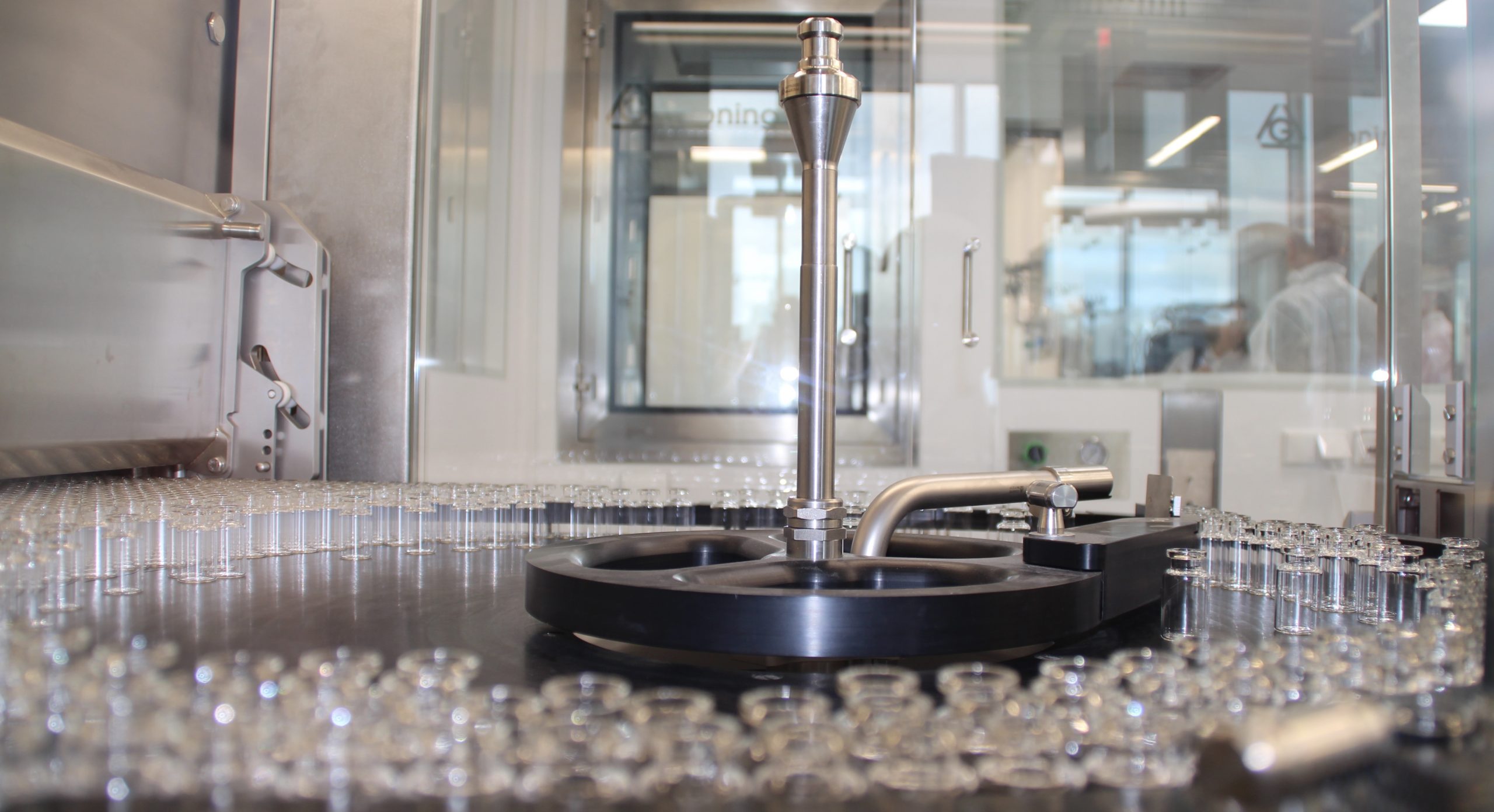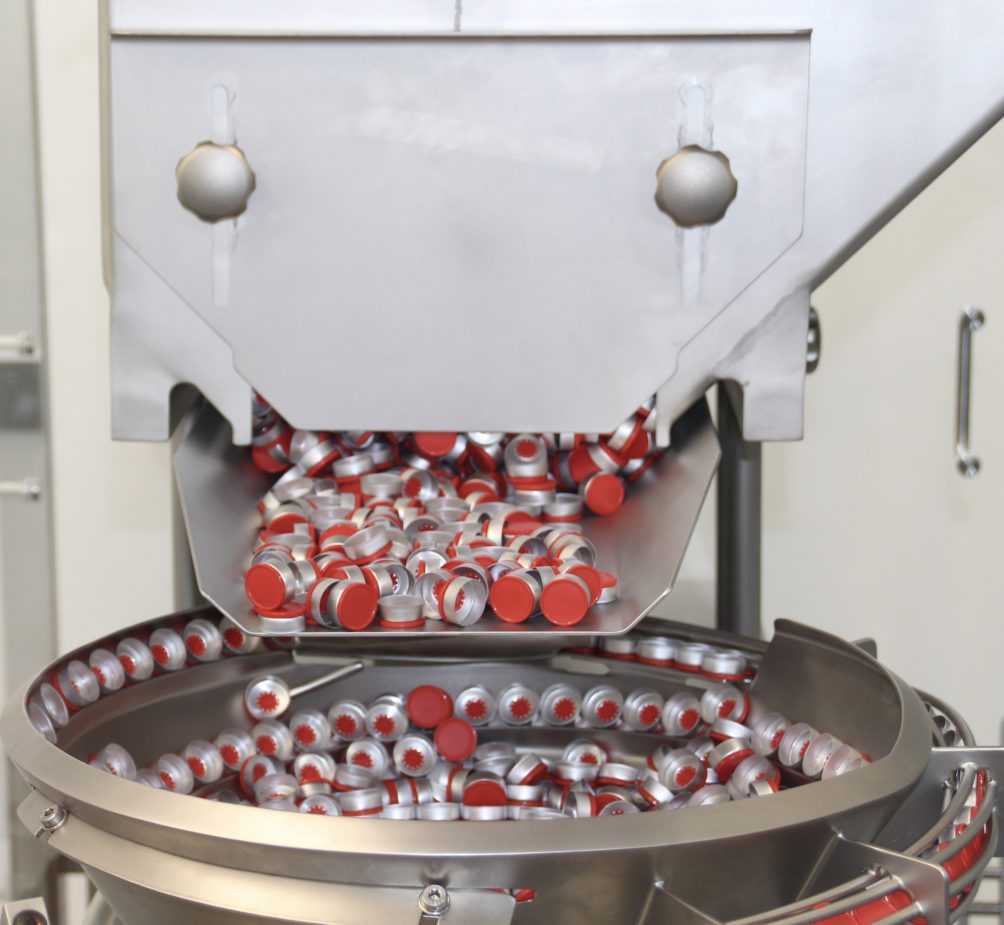
The Dutch province of North Brabant is one of the most innovative regions in Europe. It is not without reason that the province is ranked number five in Europe on the list of regions with the highest number of patent applications. However, the time-to-market for new products is getting shorter while technology is becoming more and more complex. Without international partners, Brabant could lose its leading position. This is why the province is looking at the prospects for cooperation with 5 similar regions in Germany, namely: North Rhine-Westphalia, Saxony, Thuringia, Baden-Württemberg, and Bavaria. These partners are harnessing each other’s knowledge and strengths to build a solid platform to jointly meet the challenges of the future.
Today: Life Sciences & Health
Researchers around the world are working on a vaccine against the coronavirus. Expectations are high. It should be achieved early next year at any rate. But when that time comes, a new problem will loom on the horizon. The vaccine will have to be packaged for the market in those typical vaccine bottles -vials. Or even per dosage in a syringe.
The number of pharmaceutical filling line equipment that can pack vaccines in a sterile environment is limited around the world. Almost all of them are already in operation for existing customers. Except in Oss in Brabant. There, BioConnection has just had a complete new line installed.
Historic terrain
The company’s second filling line, with a capacity of 40 to 50 million vials per year, is located on historic terrain. This is where, almost a century ago now, Organon began to extract insulin from the pancreas of pig carcasses. This was unique in the world.

The old Organon buildings have long gone. However, a completely new research & development center has been built on the foundations of the original company premises. Pivot Park is a campus for open innovation in the life sciences & health field. Within the space of seven years, Pivot Park has grown into the home base of 60 biopharmaceutical research companies and institutes with almost 600 employees. The entire spectrum in the pharmaceutical domain takes place here. From research and development to the clinical production of medicinal products.
Hotspot for pharmaceutical success
The province of North Brabant can rightly call itself a ‘hotspot’ when it comes to booking pharmaceutical success. Half of the total Dutch production value in life sciences & health (around €10 billion) is attributable to this province. Almost a quarter of all jobs in this sector end up in this province. The biotech branch in particular is growing exponentially. The number of new branches has risen by 43% since 2014, while the number of jobs in this sector has doubled.
At BioConnection, cooperation with external partners happens on a daily basis. It is the essential characteristic of this pharmaceutical service provider. “It’s not just about having a huge production capacity,” explains Alexander Willemse, CEO of BioConnection. “We can also make a major contribution to the distribution of a corona vaccine or a drug against that virus. With a capacity of 40 million vials per year, we are talking about 200 million doses. Compare this to the 446 million inhabitants that Europe has. Then you’ll understand that we have a substantial production capacity. But it’s also about innovative therapies. Young companies, spin-offs from universities. From small to medium-sized companies; the niches of this world,” Willemse contends.
‘Helping with scaling up’
“We can,” Willemse continues, “supply smaller quantities for initial clinical trials as well. These companies come to us with products that are still under development. They can sterilize their raw materials at our facilities. Our first filling line is excellent for products that are still in phase 1. We can even fill products manually. We are happy to support these start-ups and help them with scaling up their production at a later stage. Not everyone will make it across the finish line. That’s just the way it is with pharmaceutical product development. But the customer is free to stay with us. From the first small batches filled by hand to the fully automatic filling of vials and syringes in large batches.”

BioConnection is just one of the companies that, just like Organon back in the day, put Brabant on the international map as an innovative pharmaceutical region. An important reason for the distinctive character of Brabant within this sector lies in its constructive cooperation models.
‘The Netherlands is a test bed for German companies’
Thijs Taminiau and Mark Koppers from the Brabant Development Agency (BOM) explain how they see this kind of supportive role for German companies that stems from Brabant. “The Netherlands can be a great test bed for German companies. It is a relatively small market. The time-to-market is therefore brief and you reach the consumer very quickly. What’s more, the Dutch are real ‘early adopters’. We embrace new technology very readily, also in the field of healthcare. Consider the digitalization of healthcare in general, but also systems for remote assistance. For example, with the use of medical wearables in home care. Germany can learn a lot from us in this respect,” says Taminiau, Foreign Investments team leader at the BOM.
European cooperation
On the other hand, Germany offers opportunities for Brabant entrepreneurs, given that it encompasses a huge market. “We can easily scale up there. But there is something else at stake too. If we, as Europe as a whole, want to meet the challenges of the future, we can only do this through European cooperation. This also applies to Germany.”
As Senior Project Manager International Trade at the BOM for companies in Brabant, Koppers forges contacts with potential partners in Germany. While doing so, he regularly encounters the problem that companies there do not immediately think of the Netherlands when they are looking for international cooperation.
Med Tech and e-Health in the Netherlands is already quite well established
“Studies have shown that the perception of the average German entrepreneur of the Netherlands does not go very much further than being a major supplier of fruit and vegetables and a vacation spot in the province of Zeeland. We have been building up our technology expertise for years. In the meantime, the Netherlands is starting to become more and more interesting for the Germans. Nevertheless, their natural reflex is to turn their gaze to the east or seek cooperation with large countries such as the United States or China. After all, large economies are always eager to look at other large economies.”
Brabant has a lot to offer, according to Taminiau. Especially in light of major trends such as an aging population, chronic diseases, and the total digitalization of healthcare. Brabant is doing well when it comes to Med Tech and e-Health. Germany is now looking with great interest towards the Netherlands with regard to the developments in those fields. As well as what has already been put into practice. “In the Netherlands,” Koppers goes on to say, “this market is already reasonably well established. This is where we as Brabant have a genuine competitive edge.”
However, both of them warn that you have to be well prepared in advance as a Dutch company. Yet there is obvious added value whenever substantial savings or a significant increase in quality can be gained or a marked boost to efficiency. German partners are definitely interested then. “Consequently, you have to be able to provide a very clear explanation of that added value and substantiate it with references, preferably from the German market itself. Otherwise, Germans will never switch to something new. That’s a cultural thing.”
Exchanging knowledge
Koppers also underlines the importance of the exchange of knowledge. “You need to be aware of each other’s expertise. That can be difficult. We understand what TNO (the Netherlands Organisation for Applied Scientific Research, ed.) is capable of. But we don’t know what the Fraunhofer Institutes are all working on, for example. You have to find a way to bring that all together. This is the only way to accelerate innovation.”
“Fortunately, there are already successful forms of collaboration. Take, for example, Brainport Industries’ Medizintechnik Holland project. That still yields new projects. As a consequence, Brabant’s Med Tech suppliers are firmly on the map nowadays. There is a lot of expertise here in the field of surgical instruments and devices such as MRI scanners. They have been making parts for Philips for years. They could also do that for Siemens Healthineers or Ziehm Imaging and Zeiss. A number of major German players have since become aware of this.”
You can also read other IO articles about the cooperation between the province of Brabant and the German regions:
Matchmaker for South German and Dutch Brabant companies sees plenty of opportunities
German Gründlichkeit and Brabant innovation can deliver something beautiful together
Great opportunities for Brabant as a supplier for fuel cell manufacturers

